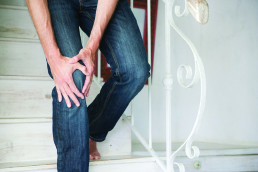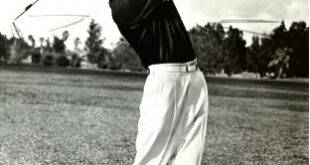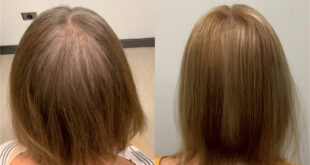By Dr. Ricardo Leano
 Osteoarthritis (OA) affects about 27 million Americans and is the most common chronic condition of the synovial joints and a common cause of chronic pain in older people. OA can affect any joint, but it occurs most often in knees, hips, and lower back. Neck, small joints of the fingers and the bases of the thumb and big toe are also frequently affected. It is also called Degenerative Joint Disease (DJD) or Degenerative Arthritis.
Osteoarthritis (OA) affects about 27 million Americans and is the most common chronic condition of the synovial joints and a common cause of chronic pain in older people. OA can affect any joint, but it occurs most often in knees, hips, and lower back. Neck, small joints of the fingers and the bases of the thumb and big toe are also frequently affected. It is also called Degenerative Joint Disease (DJD) or Degenerative Arthritis.
In normal joints, the cartilage covers each end of the bones that are involved in that joint. The cartilage is a firm, rubbery material that provides a smooth, gliding surface for joint motion and functions as a cushion between the bones. OA is characterized by focal areas of loss of cartilage causing pain, inflammation, and joint stiffness. As OA worsens over time, bones may break down and develop growths called spurs. Pieces of bone or cartilage may chip off and float around in the joint. In the body, an inflammatory process occurs and cytokines (proteins) and enzymes produced further damage the cartilage. In the final stages of OA, the cartilage wears away and bone rubs against bone leading to joint damage and more pain. The cartilage lacks blood supply evading the own-body healing abilities. It is better to regenerate your cartilage, instead of replacing it with titanium. You may completely avoid or, at least, postpone a major surgery for several years.
Age, genetic factors, and other systemic factors like obesity, all predispose to the development of osteoarthritis. But, we also know that certain forms of activity predispose joints to OA, as well as joint injury and some hormonal factors. Although OA occurs in people of all ages, osteoarthritis is most common in people older than 65.
Symptoms of osteoarthritis differ, depending on which joints are affected and how severely they are affected. Scientists have noticed a confusing lack of direct relationship between radiographic evidence of severity of OA and symptoms. However, the most common symptoms are pain and stiffness, mainly early in the morning or after resting. Symptomatic joints may get swollen, particularly after prolonged activity. Symptoms tend to build over time rather than abruptly.
Even though symptoms may differ, there are features that are common to all symptomatic OA joints. These include pain, which is usually use-related (prolonged activity or prolonged rest); short-lasting stiffness or difficulty initiating movement after rest; limitation of movement with pain at the end of the range, often accompanied by cracking of the joint during activity; tenderness of the joint and palpable bony swelling around it; and, in some cases inflammation (warmth, swollen, tenderness, and redness).
Osteoarthritic pain, swelling or stiffness may make it problematic to complete ordinary duties at work or at home. Simple activities like opening a box of food, tucking in bed sheets, grasp and hold objects, such as a pencil, or to do delicate tasks, such as needlework, grasping a computer mouse or driving a car can become very difficult. Activities such as lifting objects, walking, and climbing stairs may become problematic.
The pain, reduced flexibility, side effects from medication, consequences from treatments (surgery) and other factors associated with OA can lead to adverse health effects not directly related to the joint disease.
Many people believe that the effects of OA are unavoidable, so they don’t do anything to manage it. OA symptoms can deter work, social life, and family life if actions are not taken to stop joint damage, control pain and improve flexibility.
Not having an adequate treatment may have consequences. Knee or hip pain may lead to a sedentary lifestyle that endorses weight gain and possible obesity, which can lead to the development of diabetes, heart disease and high blood pressure. People with OA have risk factors such as decreased function, muscle weakness and impaired balance that make them more likely to fall and may experience as much as 30 % more falls and greater risk of facture than those without OA. Side effects from medications used for pain relief, like opioids, can also contribute to falls. On the other hand, invasive treatments like surgery (total joint replacement) carry the risk of infections, lengthy and painful rehabilitation, and prolonged absence from work.
The joints that are most commonly involved are the cervical and lumbar spine, knees, hips, hands, and great toes. The joints least likely to be affected by OA are the ankles and the shoulders. OA of the spine is a difficult problem because chronic back pain is particularly poorly associated with any definable pathology.
Symptoms vary depending, of course, of which joint is affected. Knee OA manifest with pain, stiffness, reduced flexion, weakness, deformity and “grating” sensation with movement. Hip OA manifests with pain on walking, which may be felt in the buttock, groin, thigh, or knee (source of diagnostic confusion). In the hands, OA affects more the joints in the fingers and the base of the thumb. Bony growths (nodes) at the edge of finger joints are typical. Pain, redness, tenderness, and deformity are not uncommon in the fingers.
The diagnosis is mainly clinical based on symptoms and physical exam. Plain X-Rays are helpful in confirming the diagnosis and are of value in excluding other causes of joint pain. Other helpful studies include Ultrasonography and MRI.
The traditional treatment was aimed to manage symptoms and to avoid iatrogenic complications. Most information on management of peripheral joint OA focus on the knee, but it can be applied to any joint. Education is particularly important in OA. Specific muscle-strengthening exercises can reduce pain and disability. Moving is one of the most beneficial ways to manage OA. Assistive devices like scooters, canes, walkers, splints, shoe orthotics, etc. can help with function, mobility and to lessen the risk of fall. The U.S. DHHS recommends 150 minutes of moderate exercise per week to everyone, including those with arthritis. Pain control can be achieved with different medications, like acetaminophen, NSAIDs (ibuprofen, naproxen, and celecoxib) and topical creams. Intra-articular injections with steroids have good evidence supporting relief for a few weeks. Intra-articular injections of hyaluronic acid have also been shown to be effective and requires 3 to 5 weekly injections. Surgical options may include arthroscopic debridement for milder disease or total joint replacement for more severe cases with all the concurrent risks and costs.
The most novel approach to treat OA is Regenerative Medicine (Reg-Med). Reg-Med comprises the intra-articular injection of PRP (Platelet Rich Plasma), stem cells from bone marrow, mesenchymal cells from fat, or stem cells from amniotic fluid or umbilical cord blood. Many times, and depending on the individual patient, PRP are combined with any of the other modalities. The cartilage lacks blood supply evading the own-body healing abilities. When mesenchymal or stem cells are injected directly into the joint, all the healing elements are deposited directly next to the cartilage to allow that tissue to heal and even regrowth eradicating all the symptoms and limitations the patient is suffering. The treatment is performed in a few minutes and the patient may return to work in a couple of days. Painful and lengthy rehabilitation is not necessary. Your cartilage can regenerate. It is like intra-articular 3-D printing. Results are getting noticeable in a few weeks and rarely the procedure must be repeated. The cost of this procedure is, in most of the cases, less that all co-payments involved in a major surgery.
If you or any of your loved ones have been diagnosed with Osteoarthritis and a total joint replacement was offered, visit Palm Beach Pain for a free consultation with Dr. Leano before surgery. It is better to regenerate your cartilage, instead of replacing it with titanium. You may completely avoid or, at least, postpone a major surgery for several years. Call (561) 248 1166 for an appointment and a free consultation.
For any consultation, call
(561) 248 1166
for an appointment with
Dr. Ricardo Leano at
Palm Beach Pain, LLC
 South Florida Health and Wellness Magazine Health and Wellness Articles
South Florida Health and Wellness Magazine Health and Wellness Articles




